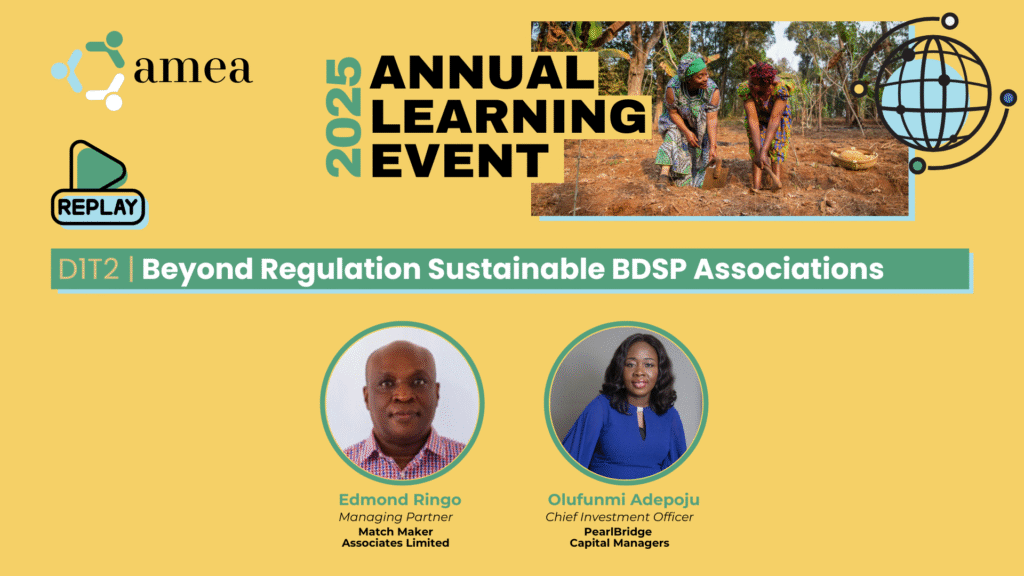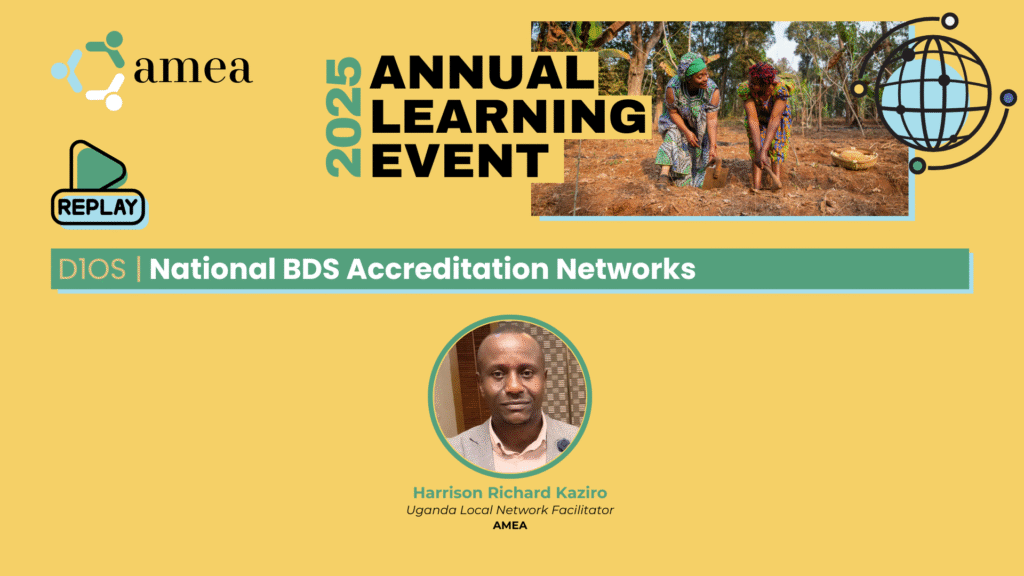Developing Service Coalitions | D1T4 ALE25

IDH demo-ed their Innovation Platform on each day, with a focus on Developing Service Coalitions and Gender Business Model Transformation. In terms of Service Coalitions the benefits were clear, especially where there is complementarity and synergy, however the development of a coalition takes time and upfront investment is needed (Donors take note!). This development phase must ensure the right partners are selected and this process is often under-estimated, with stumbling blocks often being around data sharing and other intellectual property issues.
Local Market BDS Development | D1T3 ALE25

The next session considered Local BDS Market Development. It is clear we share the same problem analysis and to some extent we know what we need to do. We should therefore have a shared vision for a mature BDS market and shorter-term investment priorities that move the local BDS market in this direction.
Beyond Regulation Sustainable BDSP Associations | D1T3 ALE25

It is clear that Government plays a critical enabling role where they can jumpstart processes, but BDS markets cannot be solved by Government alone.
Government Led BDS Quality Assurance | D1T1 ALE25

The vital role of Government was highlighted and this led on to a session examining Uganda and Tanzania’s work on BDS certification. This work is anchored in key Ministries, backed by research which confirms the weaknesses of BDS markets. The Governments’ response includes the development of BDS Strategic Frameworks, BDS Guidelines and draft Certification systems.
National BDS Accreditation Frameworks | D1OS ALE25

Harrison Kaziro opened up the discussion by presenting National BDS Accreditation Frameworks as being essential for improving BDS service quality. He outlined the fragmented nature of current BDS delivery and proposed a systematic approach to standardizing and coordinating services. A tiered BDS certification system backed by sustainable financing was proposed. This system should be developed in phases based on the available resources and capacity.
Annual Learning Event 2025 – Event Report

A new AMEA-supported case study reveals how innovative approaches can unlock over $4 million in agricultural credit while achieving 95% repayment rates.
Agriculture in West Africa faces a persistent challenge: smallholder farmers struggle to access the financial services they need to grow their businesses and improve their livelihoods. In Benin, this reality has kept countless producers trapped in cycles of low productivity and limited market access.
Scaling Agri-BDS in the Ethiopian Barley Value Chain (Case Study)

A new AMEA-supported case study reveals how innovative approaches can unlock over $4 million in agricultural credit while achieving 95% repayment rates.
Agriculture in West Africa faces a persistent challenge: smallholder farmers struggle to access the financial services they need to grow their businesses and improve their livelihoods. In Benin, this reality has kept countless producers trapped in cycles of low productivity and limited market access.
Catalyzing Agricultural Growth in Benin (case study)

A new AMEA-supported case study reveals how innovative approaches can unlock over $4 million in agricultural credit while achieving 95% repayment rates.
Agriculture in West Africa faces a persistent challenge: smallholder farmers struggle to access the financial services they need to grow their businesses and improve their livelihoods. In Benin, this reality has kept countless producers trapped in cycles of low productivity and limited market access.
Tanzania Roadmap

AMEA Tanzania, in partnership with the National Economic Empowerment Council (NEEC), is proud to present a transformative Strategic Roadmap for Agriculture-Focused Business Development Services (2025-2030).
Guide des bonnes pratiques pour les organisations agricoles professionnelles du Benin

Dans le secteur agricole, la notion des bonnes pratiques est plus connue et utilisée dans les processus de production de transformation et de stockage. Dans ce cadre, les acteurs sont invités à suivre un certain nombre de directives et de comportements afin de garantir à leur produit une qualité irréprochable. Cela leur permet d’accéder plus […]
